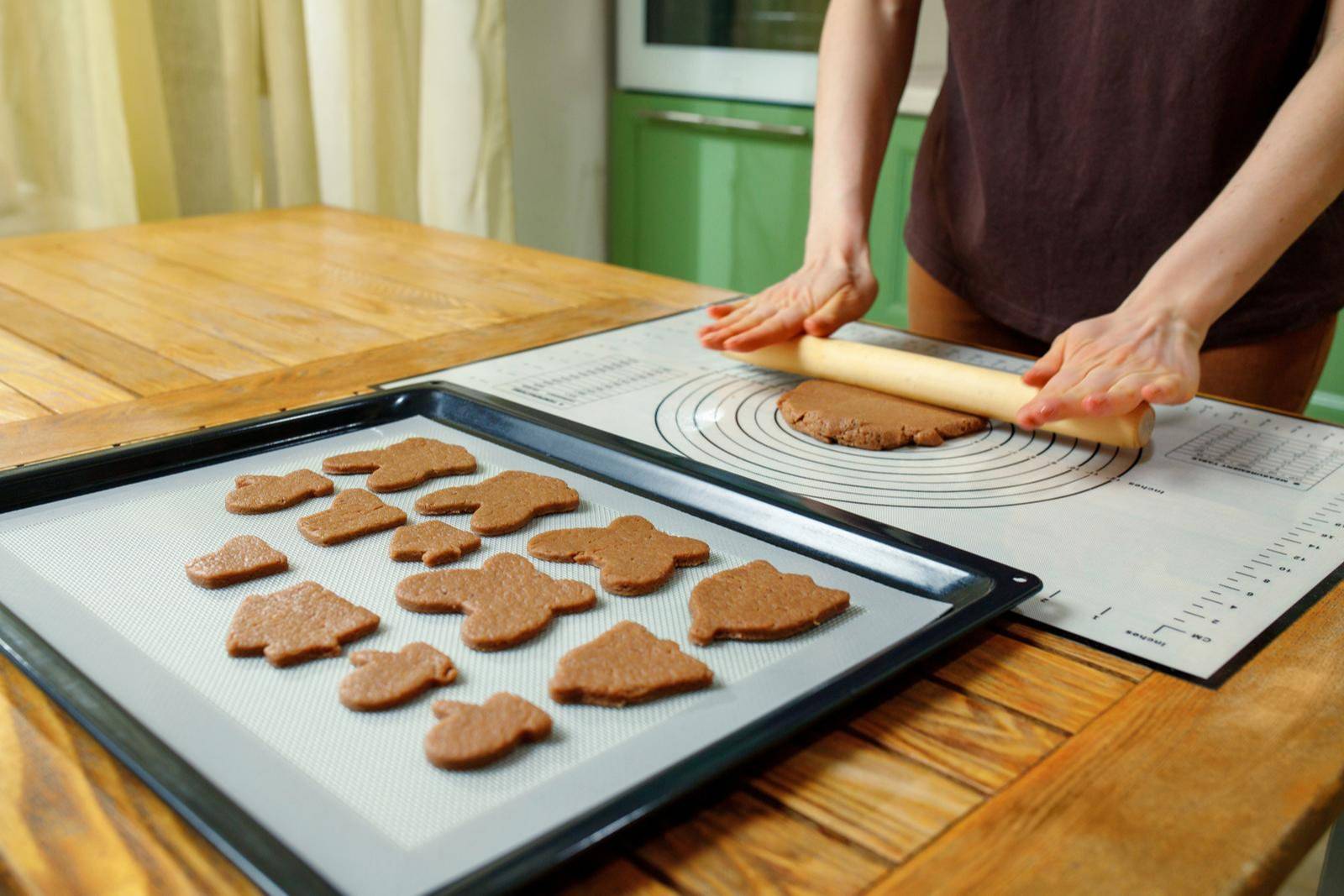Silicone baking mats have revolutionized the way we cook, offering a reusable, non-stick alternative to parchment paper and aluminum foil. They are ideal for baking, roasting, and even freezing, making them a versatile addition to any kitchen. This guide provides essential tips and insights to help you select the best silicone baking mats for healthy cooking, ensuring you enjoy the benefits of this innovative kitchen tool.
Understanding the Benefits of Silicone Baking Mats
Silicone baking mats offer numerous advantages over traditional baking methods. They provide a non-stick surface that eliminates the need for cooking sprays, oils, or parchment paper, promoting healthier cooking. These mats are reusable, reducing waste and saving money over time. They also distribute heat evenly, ensuring consistent cooking results. Understanding these benefits highlights why silicone baking mats are a valuable addition to your kitchen, enhancing both convenience and health.
Evaluating Material Quality
The quality of the silicone used in baking mats is crucial for performance and safety. Look for mats made from food-grade, BPA-free silicone to ensure they are safe for cooking. High-quality silicone should be flexible yet durable, resistant to tearing, and capable of withstanding a wide range of temperatures. Some mats are reinforced with fiberglass for added strength and even heat distribution. Evaluating material quality ensures your baking mats are safe, long-lasting, and effective.
Considering Size and Shape
Silicone baking mats come in various sizes and shapes to fit different baking sheets and pans. Standard sizes include half-sheet and full-sheet mats, but you can also find mats for round pizza pans, toaster ovens, and even custom sizes. Consider the dimensions of your baking equipment and choose mats that fit well. Some mats come with pre-measured circles or grids, which can be helpful for evenly spaced cookies or pastries. Considering size and shape ensures your mats are versatile and compatible with your existing kitchen tools.
Checking Temperature Tolerance
Temperature tolerance is a key factor in selecting silicone baking mats. Ensure the mats you choose can withstand high baking temperatures, typically up to 480°F (250°C), without melting or releasing harmful chemicals. They should also perform well at low temperatures, making them suitable for freezing. Checking temperature tolerance ensures your mats can handle a variety of cooking tasks, from baking cookies to roasting vegetables and freezing dough.
Evaluating Non-Stick Properties
The non-stick properties of silicone baking mats are one of their main advantages. Look for mats with a smooth, non-stick surface that allows food to release easily without the need for additional grease or parchment paper. Some mats have a textured surface that can enhance non-stick performance and prevent sticking even with delicate or sticky foods. Evaluating non-stick properties ensures easy food release, effortless cleanup, and healthier cooking by reducing the need for added fats and oils.
Assessing Ease of Cleaning
One of the benefits of silicone baking mats is their ease of cleaning. They can be washed by hand with warm, soapy water or placed in the dishwasher for convenience. Look for mats that are dishwasher-safe and resistant to staining and odors. Some mats have a glossy surface that repels food residue and makes cleaning easier. Assessing ease of cleaning ensures your mats remain hygienic and ready for use, saving time and effort in the kitchen.

Exploring Multi-Functionality
Silicone baking mats are incredibly versatile and can be used for more than just baking. They are suitable for rolling out dough, kneading bread, and even as a surface for candy-making or chocolate work. Some mats can double as trivets or placemats due to their heat-resistant properties. Exploring multi-functionality ensures you get the most value from your mats, making them a versatile tool for a wide range of cooking and baking tasks.
Considering Brand Reputation and Reviews
When selecting silicone baking mats, consider the reputation of the brand and read customer reviews. Established brands with positive reviews are more likely to offer high-quality products. Look for detailed reviews that discuss the mat’s durability, non-stick performance, and ease of cleaning. Professional reviews and consumer reports can provide additional insights and comparisons. Considering brand reputation and reviews ensures you choose mats that meet your expectations and provide reliable performance.
Evaluating Price and Value
Silicone baking mats are available at various price points, from budget-friendly options to premium brands. While it’s tempting to choose the cheapest option, investing in high-quality mats can provide better performance and longevity. Consider the features, material quality, and durability when evaluating price and value. Sometimes, buying a set of mats can offer better value than purchasing individual pieces. Evaluating price and value ensures you make a cost-effective choice without compromising on quality.
Assessing Environmental Impact
Silicone baking mats are an eco-friendly alternative to disposable parchment paper and aluminum foil, reducing kitchen waste. Look for mats made from sustainably sourced materials and those that are recyclable at the end of their lifespan. Some brands prioritize environmentally friendly manufacturing practices, which can further reduce your ecological footprint. Assessing environmental impact ensures your choice of baking mats aligns with sustainable practices, contributing to a greener kitchen.
Considering Storage Options
Proper storage of silicone baking mats can prolong their lifespan and maintain their performance. Look for mats that can be rolled up or folded without damage for easy storage in drawers or cabinets. Some mats come with storage bands or cases to keep them organized and protected. Consider the space you have available and choose mats that fit your storage needs. Considering storage options ensures your mats remain in good condition and are easily accessible when needed.
Exploring Special Features
Some silicone baking mats come with special features that enhance their functionality. Mats with measurement markings or grid patterns can help with precise baking and portioning. Perforated mats allow for better air circulation, resulting in crisper baked goods. Mats with raised edges can contain spills and prevent drips. Exploring special features ensures you find mats that offer additional benefits and cater to your specific baking requirements.
Selecting the best silicone baking mats for healthy cooking involves understanding their benefits, evaluating material quality, and considering factors such as size, temperature tolerance, and non-stick properties. Assessing ease of cleaning, multi-functionality, brand reputation, and price further guides your decision-making process. Evaluating environmental impact, storage options, and special features ensures you choose mats that enhance your cooking experience and contribute to a sustainable kitchen. Use this guide to confidently navigate the market and find the perfect silicone baking mats that support your healthy cooking endeavors, making your time in the kitchen more enjoyable and efficient.

